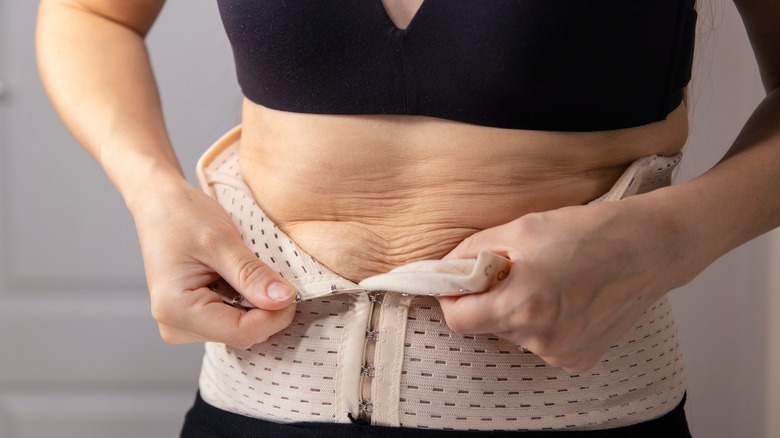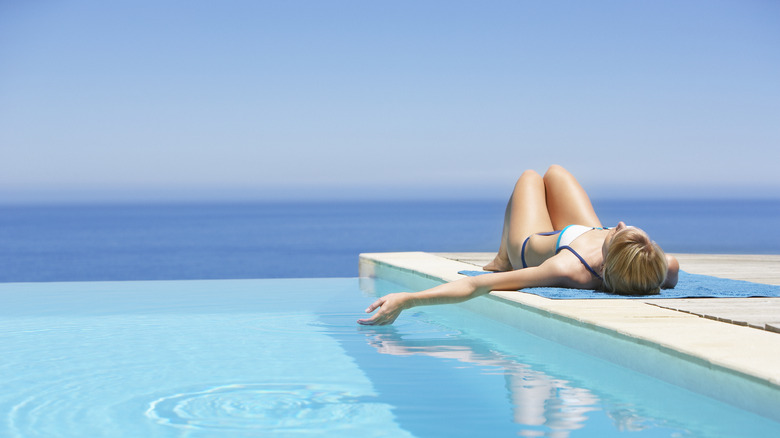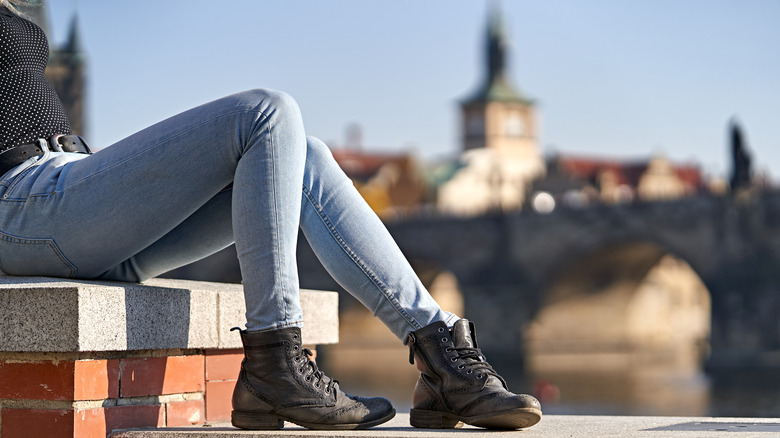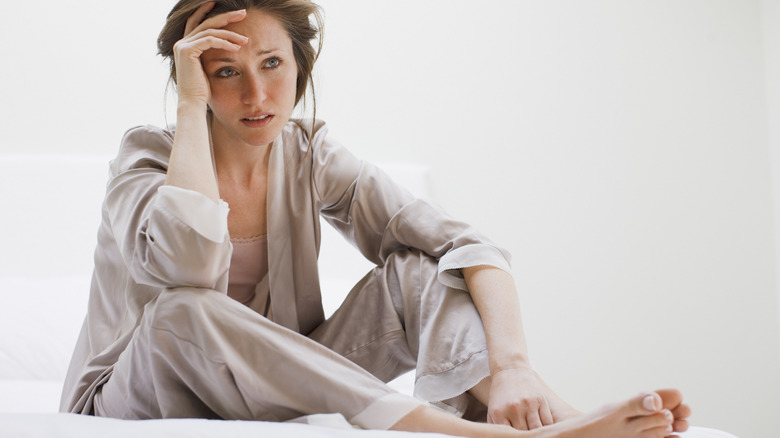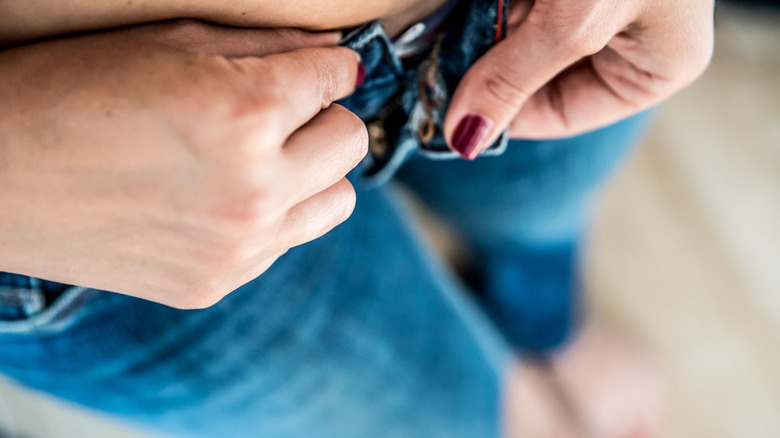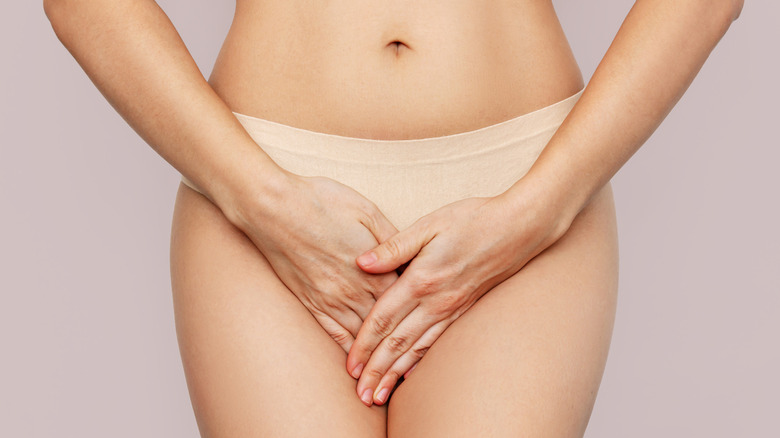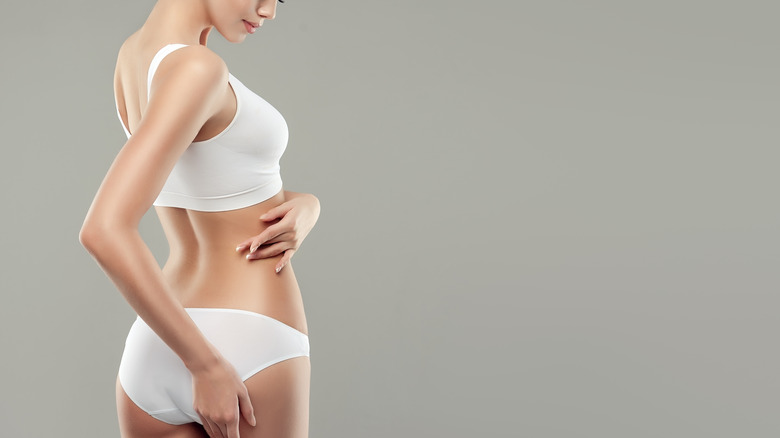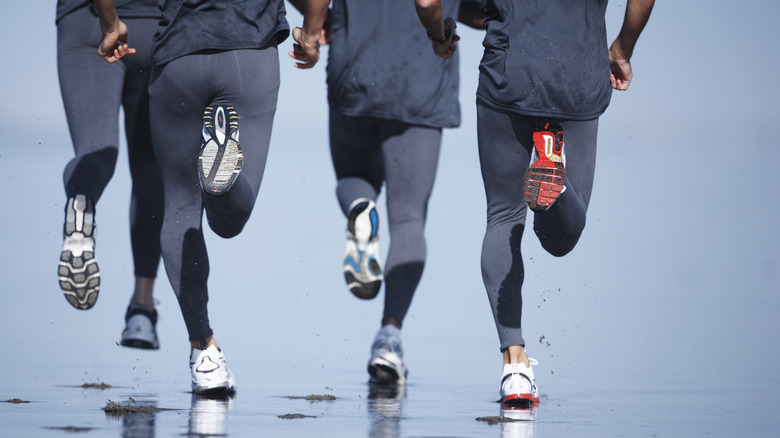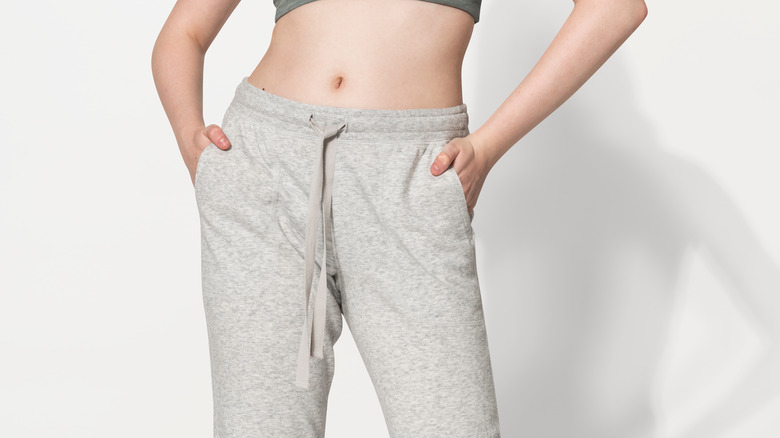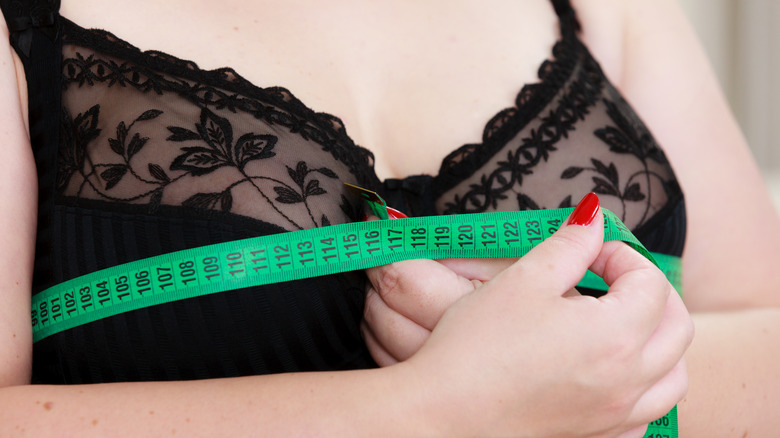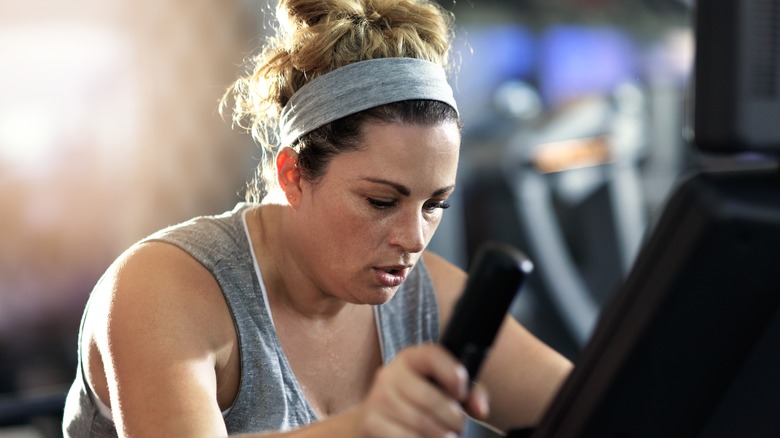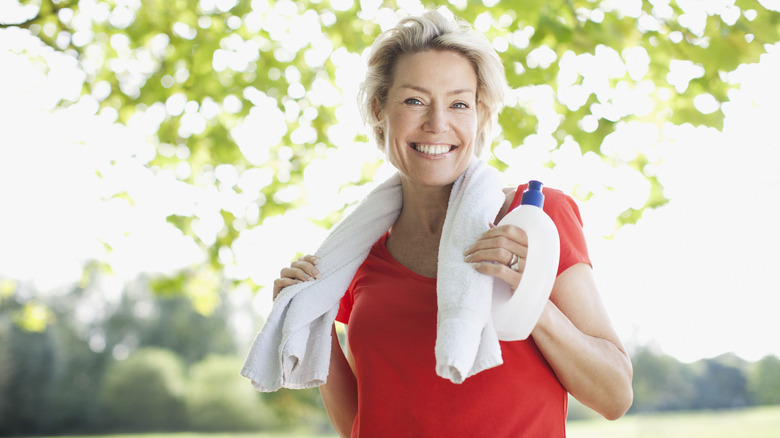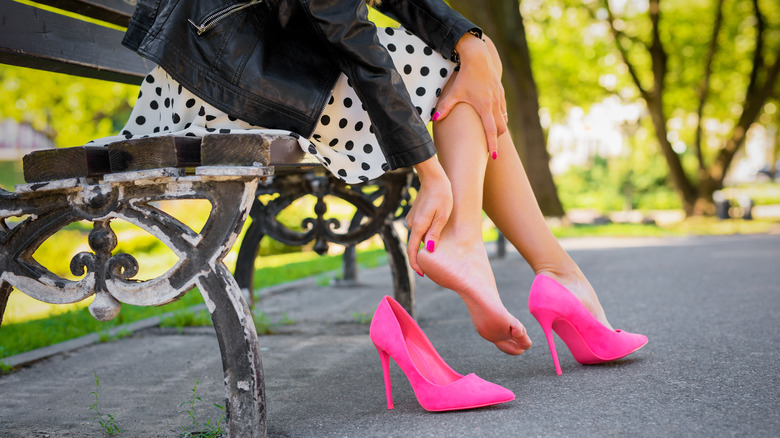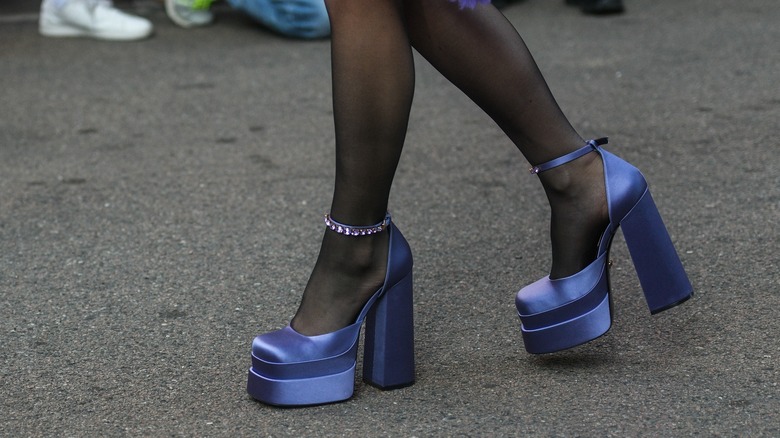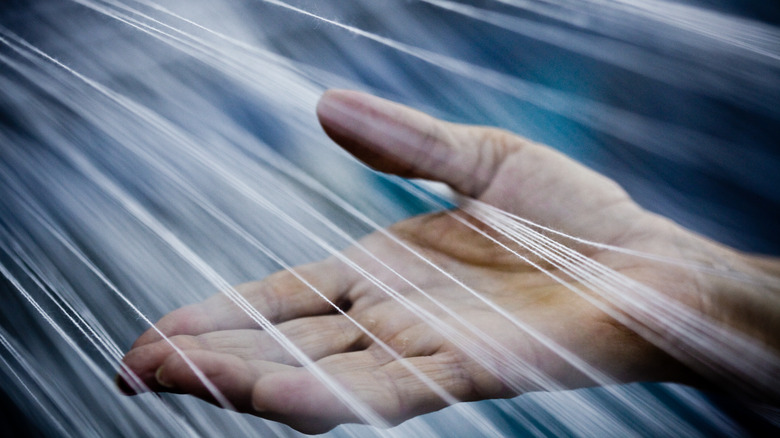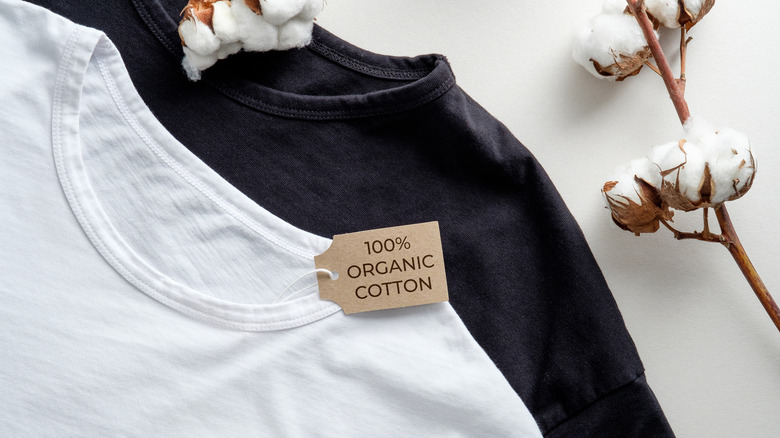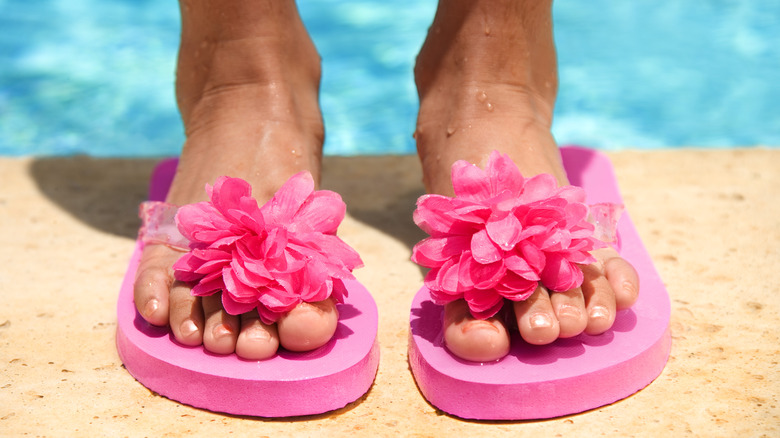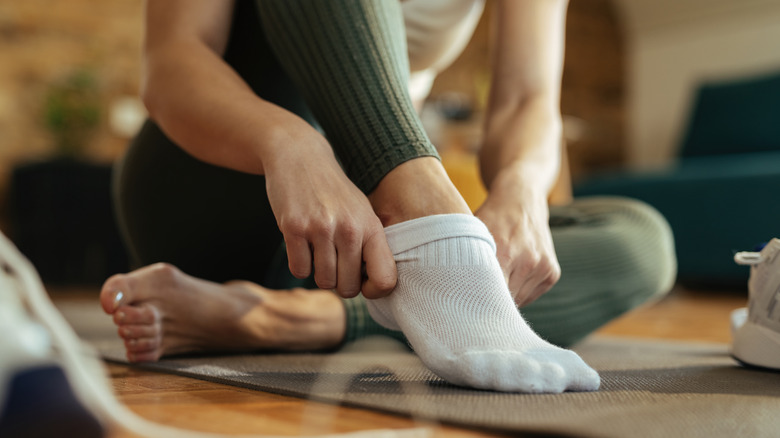Clothing Items That Are Bad For Your Health (& Items You Should Wear More Often)
Clothing isn't the first thing that comes to mind when we think about what could harm our health. Surprisingly though, quite a few clothing items can irritate our skin, induce infections, or create problems in our bodies. Bacterial and yeast infections have been attributed to clothes, as well as even deformed bones or irritable bowel syndrome. Don't despair if your favorite type of clothing is on this list –- most of the items we've listed are not problematic if worn only on rare occasions, but they can raise concern if worn daily or on a more regular basis.
For each type of clothing we suggest you stay away from, we've also included another piece that you could replace it with. Additionally, some of the items on this list cause problems if they're not worn in the proper size, in which case you simply find a better fit. And we didn't leave you empty-handed –- we've also given you suggestions on how to find a proper fit. So rest easy, we've got your wardrobe (and your health) covered.
Waist trainers can trigger acid reflux
Waist trainers are a fad of late, but that doesn't mean that they're great for you. In fact, it might be quite the opposite. Waist trainers work by squeezing, sweating, and shrinking, according to Healthline. But squeezed or compressed fat or tissue doesn't just go away — it has to stay somewhere in your body, which means that it's encroaching on other organs' territories.
Waist trainers, and most shapewear, can worsen acid reflux, heartburn, irritable bowel syndrome, or even restrict your breathing to where it can cause dizziness and light-headedness, says neurologist Orly Avitzur M.D. to AARP. These are all due to the fact that the gases and liquids in your body just don't have the space to move freely when restricted by shapewear.
Avitzur further shares that wearing the wrong size shapewear is one of the biggest reasons people have problems with it, so simply making sure you're in the right size will help. She also suggests you wear waist trainers or shapewear as little as possible: "Think of corsets and Spanx like high-heeled shoes — a pair of fantastic stilettos. Restrict these undergarments to special events, but then take them off immediately."
Bathing suits can harbor bacteria
It might seem right in the heat of summer, but sitting in a wet, or even damp, bathing suit could be detrimental to your overall health. "Yeast and bacteria really thrive in moist, dark places, like a wet bathing suit or wet workout clothes," says Alyssa Dweck, an assistant clinical professor and OB/GYN at Mount Sinai School of Medicine, to HuffPost.
When bacteria thrive, that can lead to an imbalance and cause vaginal infections, urinary tract infections, and yeast infections. Plus, wet bathing suits can result in itchy rashes around the edges of the suit and potentially even cause jock itch, an infection that's described as similar to athlete's foot (per HuffPost). None of these infections are necessarily a high risk — but people who are immune-compromised or susceptible to infections should be wary of sitting around in their wet suits. The easy solution to this problem is to change out of your wet suit as soon as you can.
Skinny jeans can ruin your circulation
While the fashion industry has declared that "skinny jeans are dead" there are even more reasons than just fashion alone to ditch your skinny jeans. Tighter-than-normal jeans have been linked to bacterial vaginosis, irritation, and yeast infections according to Dr. Axe. One study published in the Journal of Lower Genital Tract Disease found that women who wear skinny jeans more than four times per week had twice the risk of developing vulvodynia, a condition causing pain in the outer parts of a woman's genitalia.
Skinny jeans can also lead to compartment syndrome and nerve damage if worn for extended periods of time — especially if worn during exercise or when it is particularly hot outside (via Dr. Axe). And it's not just theoretical either –- an article published in the Journal of Neurology, Neurosurgery, and Psychiatry speaks of a young woman that developed foot numbness after long hours of helping her family during a move while wearing skinny jeans. Additionally, skinny or tight jeans can also negatively impact fertility for men, abdominal pain, and back pain from your posture being affected.
Opt for straight-leg jeans instead
Skinny jeans aren't necessarily bad, but they shouldn't be your main bottoms for everyday wear. Instead, opt for straight jeans whenever you want a tighter fit in casual wear, or go for a pencil cut in dress pants. Both of these will be equally as flattering as skinny jeans and show off your figure. Straight-leg jeans flatter every body type, so they're a win for all. Besides, Forbes agrees that skinny jeans are officially out, and you'll be more on trend with a pair of bootcut, patchwork, baggy, or tapered-leg jeans.
Out of all the jean styles that have circulated back around, bootcut and tapered-leg jeans are the most likely to give you a slim fit and keep the look of skinny jeans without being overly tight. Jeans Fact, a comprehensive online resource for all things denim, adds cropped jeans to the list of alternatives to skinny jeans, saying that they have a similar silhouette that will give you the look you're searching for with skinny jeans.
Last night's pajamas can induce yeast infections
Think of your pajamas just like everyday clothes –- if you wear them for eight hours, you'll likely wash them. While you might not have ventured outside or worked in them, your jammies are still getting dirty. Leanne Stapf, COO of The Cleaning Authority, says, "In addition to the buildup of overnight perspiration, our skin is constantly shedding. Those dead skin cells coupled with the germs accumulated from daily activities are now being transferred to your pajamas." (via Well+Good).
If that doesn't sound gross enough, ErgoFlex, a mattress company based in the U.K., found that, on average, men changed their pajamas every 13 days while women went even further to an average of 17 days! While it might not seem like a big deal to some (especially if you shower every night before putting pajamas on), our bodies can harbor bacteria that can be detrimental to our health if left to linger. Professor Sally Bloomfield of the London School of Hygiene & Tropical Medicine tells Good Housekeeping that many of us carry the staphylococcus bacteria, which cause infections if they enter open wounds, and E. coli, which can cause urinary infections.
Consider laundering your pajamas every three nights to keep them fresh. If you shower every night before bed, that time can be extended to one week — but no longer. If you're wearing pajamas without underwear, throw your pajamas in the wash every day or wear a new pair each night.
Accessories containing nickel can cause eczema symptoms
Unfortunately, many of the buttons and clasps on our clothes are still made from or contain nickel. In North America alone, 18% of people are allergic to nickel metals, according to The American Academy of Dermatology, and this allergy can lead to eczema-like symptoms on the skin: itchiness, dryness, and irritation.
A nickel allergy can be mistaken for a similar skin problem –- atopic eczema –- but it is actually a type of contact dermatitis, says Healthline. To tell the difference, carefully monitor just when and where your skin irritation shows up. If it's only in a certain location where your skin touched an object and doesn't spread, it's more likely to be contact dermatitis.
Nickel can still be found in many items that we wear. Pant clasps, buttons, zippers, and snaps can all contain nickel because it's a cheap material for clothing manufacturers. It can also be included in jewelry and metal furniture, so if you are diagnosed with this allergy, make sure you're aware of all your triggers. To avoid it, steer clear of any jewelry that doesn't tell you what it's made of, and spot-check fasteners and clasps on clothes.
Thongs can promote infection, too
Health shares that, in theory, since thongs are only touching your own body, you won't be catching anything you don't already have. Even so, some women do see an increase in urinary tract infections and yeast infections when they wear thongs, so if you have a history of infections or a weakened immune system, you might want to rethink your choice of underwear.
What happens is that when you have an ill-fitting thong, it can cause irritation and chaffing at your vagina and the skin surrounding it, which opens you up for infections to enter (per Health). Additionally, if your thong is freely moving from the rectum to the vagina, it can take fecal bacteria with it and introduce it to the vagina. Although those areas are both parts of your body, the vagina is just more sensitive to invaders and can develop infections easier.
Wear bikini bottoms instead
Thongs are not completely out of the question as long as they fit properly and you change them regularly. To get the best underwear though, Good Housekeeping suggests first looking at the underwear's material to make sure that it won't irritate your skin. Be sure to choose a breathable material for your panties. If you've preferred thongs in the past for their low-cut style and minimal amount of material, there are a few other options that are less irritating to your privates but won't make you feel like you're wearing too much.
The bikini is one of the more popular cuts of underwear. It features a low rise and some butt coverage but is still pretty minimal and won't create panty lines under most clothes. Some brands create lower or higher-riding bikini underwear, so just look for the ones that will be comfortable and sit well on your body. The second cut of underwear you can try is the hipster. Hipsters sit right on your hips, hence the name, and they do show a bit less cheek than the bikini cut, but they are still a good option if you're looking for an underwear style that is low-riding. Depending on the style you go with, you can have a hipster that mimics a thong even more with a lace waistband and a see-through back panel.
Heavy bags can cause back strain
Diaper bags, laptop bags, oversized shoulder bags, and large backpacks –- what do they all have in common? They're huge, and they're putting a strain on your back. HuffPost says that heavy bags are a "national epidemic," and we have to agree. Because women's oversized bags — like diaper bags, laptop bags, and huge purses — are usually designed to be carried only on one shoulder, your body has to carry an imbalanced load.
Health and wellness Expert Caleb Backe tells Healthline, "Over time, the amount of strain that we put on our bodies due to oversized bags can cause some pretty serious pain and even long-term issues like muscle spasms or a pinched nerve." Make sure that you're only carrying around only what is necessary, and try to minimize the amount of each thing that you're carrying. Also, look for ways to creatively shrink your bag, such as using a pill organizer to only take a few pills at a time instead of the whole bottle or using smaller, travel-sized bottles of lotion or hand sanitizer.
Switch to a cross-body bag
If you're finding it hard to limit the items in your purse, consider switching to a cross-body bag, even if it's on the larger side. That will at least balance out the weight of your purse over your entire body. Chiropractor Gopal Cabrera shares with Who What Wear, "Since you can wear the bag across your body, it will help distribute the weight more symmetrically, which will lead to a decrease in postural strain throughout your neck, back, and shoulders." He adds, "The wider adjustable strap will be more comfortable on your shoulders and will allow you to find the most comfortable height for the bag to hang at so it doesn't disrupt your natural gait. As long as you switch shoulders from time to time, this is one of the best choices you can make for your back, especially when it comes to longer walks or travel."
Leggings can create skin irritations
Just like tight-fitting shapewear or jeans can cause problems, leggings can harbor bacteria because they're so tight-fitting on your body and you usually use them for arduous activities such as running or going to the gym. If you wear them more than one day in a row, or even for just many hours, you may be putting yourself at risk for fungal infections like ringworm or vaginal yeast infections explains dermatologist Dr. Josh Zeichner to Cosmopolitan.
Infections may not be your only problem though –- leggings are tight and form-fitting and thus pose some of the same problems as corsets or shapewear. "When we wear really tight, high-waisted leggings that prevent us from allowing our abdominals to lengthen properly with an inhale, we can develop a 'reversed' breathing pattern," says Hayley Kava, a physical therapist, "which can, in turn, cause us to keep our pelvic floor muscles 'tense' in response to the increase in pressure with our breath." (via PopSugar). Reversed breathing, also called paradoxical breathing, can lead to shortness of breath, hypersomnia, fatigue, decreased exercise performance, and abnormally fast breathing, according to Healthline. So it's even possible that the workout leggings you wore to your fitness class could have caused you to do worse!
Go for joggers when you're active
Although leggings have been made into the more attractive option for working out, changing up your outfit to joggers or sweatpants will be more beneficial to your health. Joggers have been around for more than 100 years, according to tasc, and they've evolved to have a variety of styles and looks — so you're sure to find something that is pleasing to your style.
Joggers are supposed to sit around your hips, although higher-rise styles are also becoming popular, and will be tapered at your ankles. The pants are supposed to sit pretty close to your skin, so if they feel looser than that, you're wearing a size too big. Additionally, look for cotton fabrics to keep them breathable and light. This will ensure that your workout sessions are just as comfortable with joggers as they are with leggings — but also healthier.
Ill-fitting bras can induce back pain
An ill-fitting bra will usually leave you with reddened skin or an uncomfortable sensation. But it might be even worse than that. Wearing the wrong size bra on a daily or regular basis can cause back and neck strain, headaches, bad posture, and irreversible damage to ligaments in your breasts and chest, according to Panache, a lingerie brand.
The entire point of wearing a bra in the first place is to have it support your breasts and take some strain off of your back and shoulders. But if your bra isn't the proper size, which is especially common for women who are wearing larger cup sizes, it can instead be hurting you. In fact, Panache states that it's even possible to start out with a great-fit bra, but as it ages, it supports your breasts less and less, which puts strain on your back.
Sweatbands can exacerbate acne
Popular in the 70s, sweatbands are still in use today by many athletes and gym-goers, although they are more modern and sleek. Still, their design hasn't really changed much and their function certainly hasn't –- they're made to trap sweat from rolling down your forehead or past your wrists. While that may seem like a good thing, trapping sweat in a certain location on your body can lead to acne.
Healthline explains that there is a certain type of yeast that is naturally present on our bodies and is usually harmless — Malassezia. Unfortunately, this type of yeast will thrive and replicate quickly in warm, moist environments, which sweatbands provide plenty of. Especially if your skin is already acne-prone, sweatbands will just exacerbate the problem and potentially even cause a different type of acne than you already have, which means you'll be on two different treatments. Not fun.
Use a towel instead
If you're particularly drippy when you exercise, opt for a towel instead of sweatbands. While you'll have to do the wiping yourself, a towel actually removes the sweat from your body instead of keeping it trapped in one place.
Towel Supercenter offers some tips when it comes to choosing a towel for your next workout session. Look for a towel made of cotton, microfiber, bamboo, or linen — these materials will have the best absorbency and durability. Go for a thinner towel with less fabric density, so your towel dries quickly so as not to hold in or harbor bacteria. Find a towel that has longer fibers, as the longer the fiber is the more absorbent the towel. Lastly, go for something soft — nobody wants to be wiping their face or neck with an itchy towel. Make sure that you're washing and drying your towel after each workout session or use, too.
High heels can create muscle imbalances
They say beauty is pain, and no article of clothing embodies that better than high heels. But high heels are not just uncomfortable when you wear them –- they can leave lasting damage on your feet if you choose to wear them on a daily basis. The American Osteopathic Association (AOA) says that high heels have a full-body impact on your health when worn frequently. The AOA explains that the muscles in your feet attach to your calf muscles, which in turn attach to your hamstrings and then to your pelvis and lower back. That's why when you wear high heels for an extended time, you can also have lower back pain.
When the muscles in your feet are stressed, they pull on the other muscles that they're connected to. Each muscle is then stressed and can become irreversibly damaged if not treated in a timely or proper manner.
Dance all night in platforms instead
Sajid A. Surve, D.O., tells the AOA that there are a few things you can do to counteract the effects of wearing high heels, like stretching your feet and legs. You can do this after you've taken your shoes off at the end of the day or during the time you're wearing your high heels. Of course, you could just not wear heels at all (or wear shorter heels), but if you still want the height, consider a platform heel to limit the distance and height difference between the front and back of your foot.
Hylton Menz, a podiatrist and professor of biomechanics at La Trobe University in Australia, tells Time that, "The healthiest footwear for both older and younger adults should fit well and have a low, broad heel ..." Both Health and The New York Post list some platforms as the most comfortable heels, and Web MD says that if you're not willing to sacrifice height, platforms are the best option to stand in for stilettos.
Synthetic fibers can encourage skin irritation
Today mentions that some natural fibers, such as wool and modal (made of wood pulp), are not great for your skin, but their list of fibers you should stay away from mostly contains synthetic fibers: polyester, acrylics, nylon, and rayons. Most synthetic fibers tend to trap moisture next to your skin as your body tries to release it. Clothing created from synthetic fibers, such as polyester, rayon, and nylon, are also treated with a host of chemicals in the manufacturing process to get them to the desired color, shape, or texture, and plenty of those chemicals remain behind, says Science Daily. These chemicals can all cause skin irritations and lead to a host of problems — some of which can even be deeper than your skin.
Start making a habit to check the labels on your clothing before purchasing, especially if you have sensitive skin or some kind of skin condition, like eczema, that can be further irritated by leftover chemicals from synthetic fibers.
Choose natural fibers to wear more often
Today lists the best fibers for your skin: cotton, silk, linen, cashmere, and hemp. There is a note to be careful of even these natural fibers though — watch out for clothing that is heavily dyed or has deep colors, such as blue, purple, or red, as they may still be irritating to your skin due to the dyeing process.
Although there are no current federal regulations in place for the textile industry and its processes, Today says you can be on the lookout for the Oeko-Tex Certification that confirms that a particular brand or piece has been independently tested for "ecological practices and safety of textile products." Look for clothing that is made of 100% of any of the above-mentioned materials or even a combination of them. Cotton, linen, and hemp will be your more affordable options, and silk, cashmere, and merino wool are more expensive.
Flip-flops can breed bacterial infections
Flip-flops are the official shoes of summer –- but depending on the material they're made of, how long you're wearing them, and how supportive they are, they may not be what you want to wear. Healthline warns that while flip-flops can be a quick choice for warmer days, they're usually the least supportive of all shoes and are not a good idea if you're going to be on your feet all day.
If you're going to be getting them wet, at the beach, for instance, stick to rubber or plastic flip-flops, as they are easier to clean and will also dry quicker. The longer you walk around in wet, or even damp, shoes, the more likely you are to contract a bacterial infection, says OrthoBethesda.
Healthline suggests you stay away from flip-flops when you're walking long distances, playing any kind of sport, or driving. All of these instances of wearing flip-flops can lead to blisters, heel pain, sprained ankles, and even shin splints.
Not wearing socks can lead to stinky feet
One other piece of clothing that we do urge you to wear are socks. Not wearing socks on a regular basis can actually lead to stinkier feet than if you are wearing them. What happens to your feet when you stop wearing socks? Since your socks can soak up some of the sweat and hold in any shed skin, not wearing your socks will deposit all of that sweat and skin inside of your shoes or on the surfaces that you walk on. This not only makes your shoes stinky and gross but the next time you wear those shoes, you'll be picking all that stuff up again on your feet. Eww.
If you get stinky socks on a regular basis, the solution is not to simply stop wearing them. Instead, consider investing in some foot deodorant or visiting a doctor to inquire about why your feet sweat so often or so pungently.

